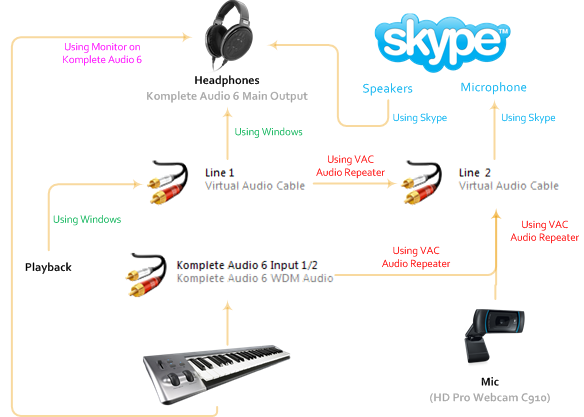
Technical Details and System Requirements Audio Repeater application that transfers from any recording to any playback device.Control Panel application to configure cables and watch their state.Stream buffering technique to partially compensate bad application buffering algorithms.Watermark control technique to improve stream stability with unstable applications.Volume control features (both attenuation and boost).PCM format conversion (sampling rate, bits per sample, number of channels).Signal mixing (with saturation) between output port clients.Unlimited number of Kernel Streaming clients connected to each port.Clock registers are bound to Virtual Cables so all streams in each cable are coherent. RTAudio support with notification events, clock and position registers.Almost no sound latency with maximal interrupt/event frequency.Floating point formats are not supported. Almost any of fixed point PCM audio formats.Up to 256 virtual cable devices (some systems limit number of MME devices).Windows 5.x, 6.x and 10.x platforms (32-bit and 64-bit).Local (console) session only (does not work via Remote Desktop or Terminal Services).Moreover, if you use an audio encoder application that encodes a stream coming from a sound card, you can use VAC to supply such an encoder with a stream produced by another application. All transfers are made digitally, providing NO sound quality loss (a bit-perfect streaming). It creates a set of virtual audio devices named "Virtual Cables," each of them consisting of a pair of waveform input/output devices.Īny application can send an audio stream to an output side of a cable, and any other application can receive this stream from an input side. This software allows you to transfer audio (wave) streams between applications and/or devices. It is used to transfer audio streams between applications or devices.

Free Download Virtual Audio Cable 4 full version standalone offline installer for Windows.


 0 kommentar(er)
0 kommentar(er)
